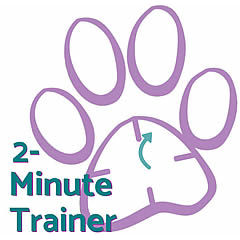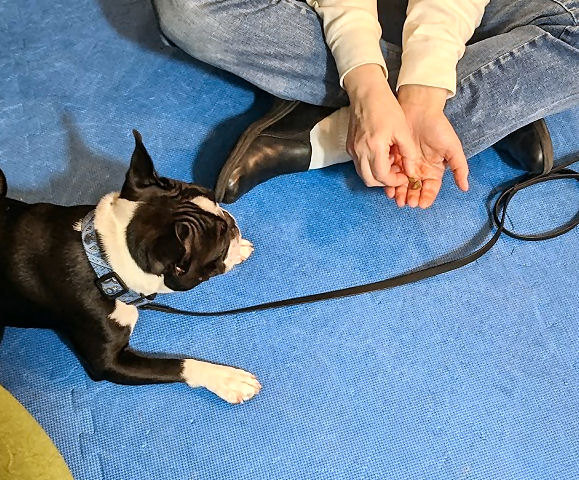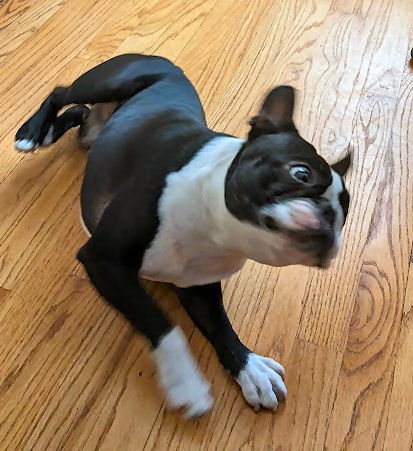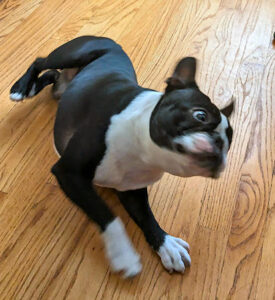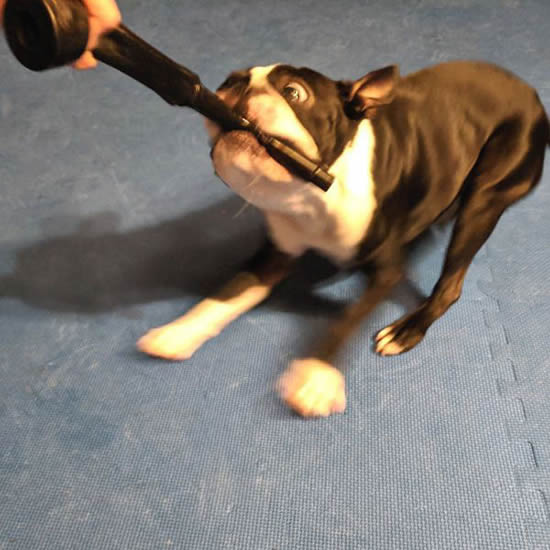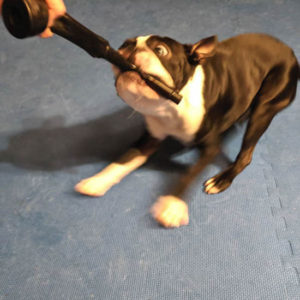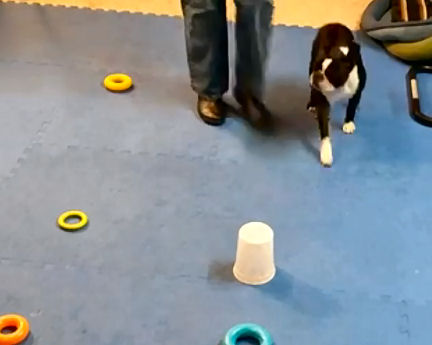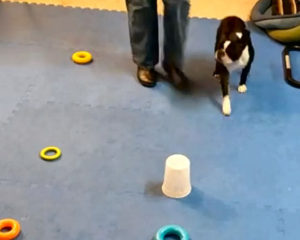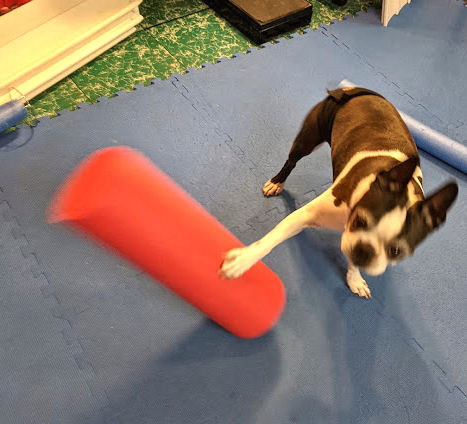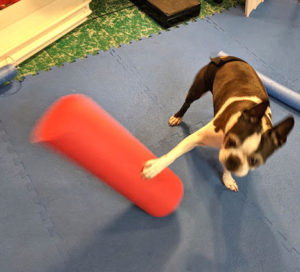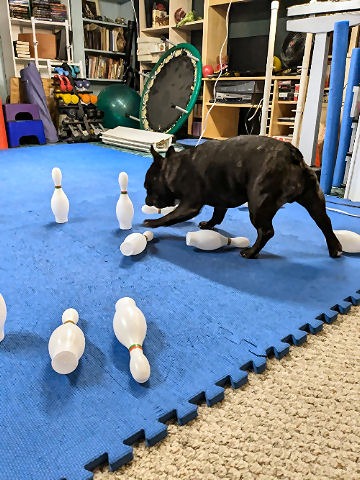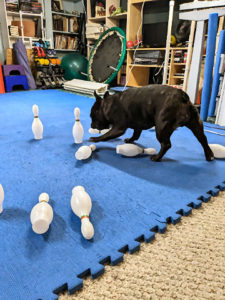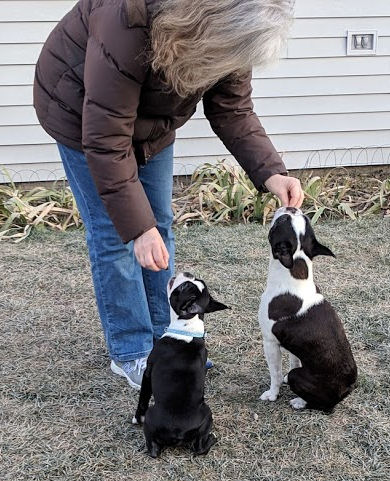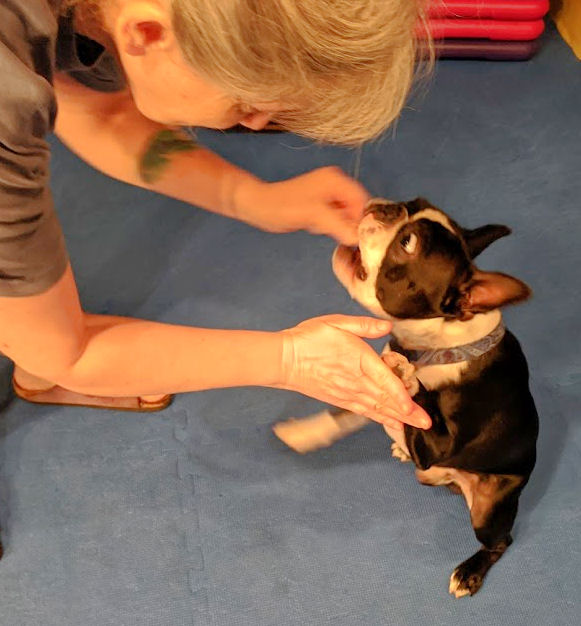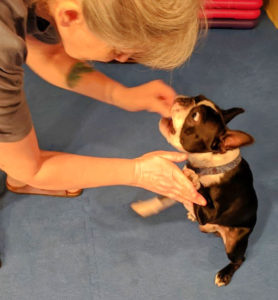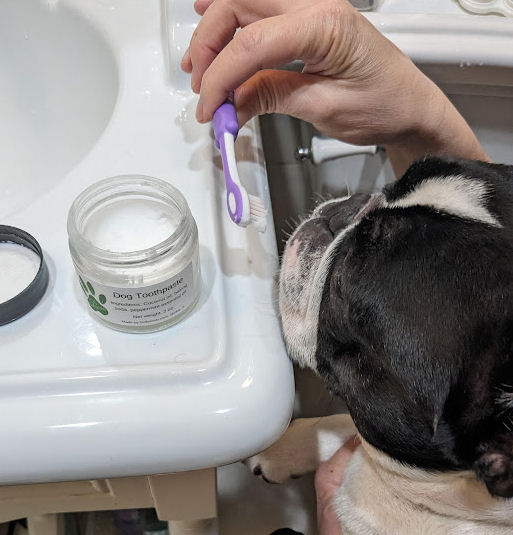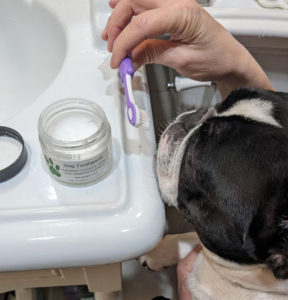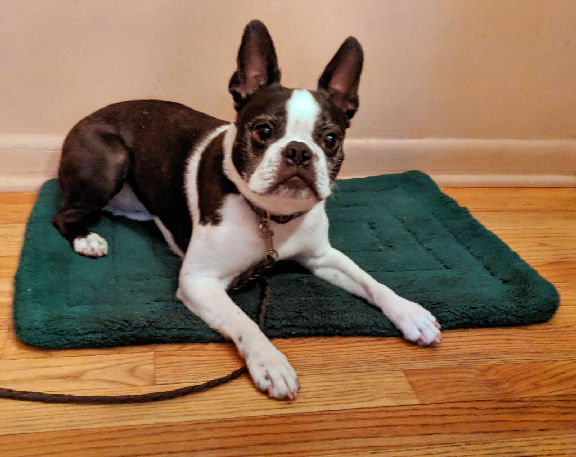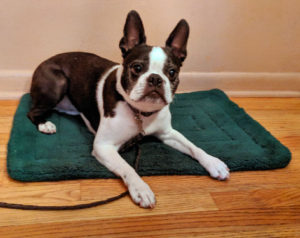How do you get your dog to think about it? To take a moment and choose well? We’ve said many times that the point of training is to get your dog to make good decisions. But what does that look like?
The biggest part of the formula is on you. Stop making all your dog’s decisions. Stop telling them what to do all the time. Stop using “No!”
Instead, when you see your dog about to choose poorly, how about you make an attention-getting sound and say “think about it.” Don’t move in unless you see your dog decide. Give them a moment to realize there’s a better choice.
Whatcha Gonna Do?
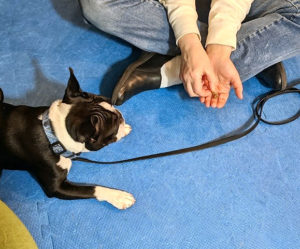
The game our students seem to play the least is “Whatcha Gonna Do?” Which makes us sad, because it’s one of the best ways to teach your dog to practice impulse control. And almost all naughty dog behavior stems from following their impulses.
Instilling some self-control goes a long way to curing most bad dog behavior. Give them the skill to pause and think, rather than just give in to their worst tendencies.
Totally worth it
Last week Hope introduced “Whatcha Gonna Do?” in her household obedience class. And met with the usual resistance. It’s not the game that’s most fun for people. Your hand can get all slobbery and some dogs will nibble, so there can be a little bit of pain. But it’s worth it.
The whole premise of “Whatcha Gonna Do?” is letting your dog discover that it’s rewarding to not follow impulse. The dog gets nothing as long as they’re being impulsive. The moment they choose to think, they’re rewarded.
When you start playing “Whatcha Gonna Do?” the dog doesn’t understand the rules of the game. At first they may get frustrated and just glance away by accident. Reward that. Even if it’s not deliberate. It’s the first clue your dog has to figuring out the rules of the game.
Be patient
It’s really hard to communicate with a different species who doesn’t speak your language. Who doesn’t think as you do. But you can explain things by teaching in ways they understand. Dogs learn by the timing and placement of rewards. If you’re playing “Whatcha Gonna Do?” and the dog looks away just because they’re getting frustrated, reward that.
It wasn’t on purpose, but it was what you wanted. And dogs can figure out what got them the reward. For most dogs it’s a process of trial and error. “I don’t get what I want by nibbling on mom’s hand, what should I do instead?” Or “I got a treat for turning my head. Maybe I should do more of that.”
Precepts of training
The three dog training truths to apply in all your games:
- Dogs always do what’s most rewarding to them.
- What gets rewarded gets repeated.
- Dogs learn by the timing and placement of rewards.
Your job as a dog trainer is to be clear about what you’re rewarding. In time, your dog will discover how rewarding it is to think before they act. And they’ll do more of it.
